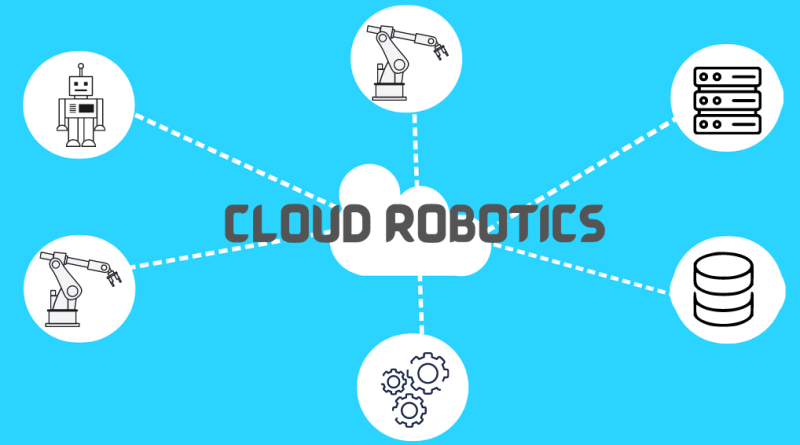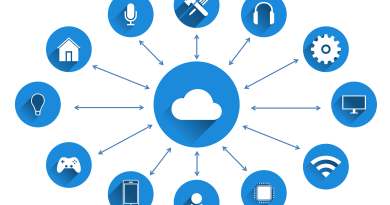What is Cloud Robotics? All You Need to Know
Cloud robotics is a term used to describe the growing trend of using cloud computing in the robotics industry. This involves providing remote resources, such as data and programs, to robotic companies so that they can develop and deploy new robots more easily and cost-effectively. Cloud robotics has become an important part of the robotics market and is helping to fuel its growth. In this blog post, we’ll take a closer look at cloud robotics and how it’s changing the robotics landscape.
What is cloud computing
Before digging deep into cloud robotics let’s see first what cloud computing is. Cloud computing is the delivery of computing services including servers, storage, databases, networking, software, analytics, and intelligence over the Internet (“the cloud”) to offer faster innovation, flexible resources, and economies of scale. It is a model for enabling ubiquitous, convenient, on-demand network access to a shared pool of configurable computing resources (e.g., networks, servers, cloud storage, applications, and services) that can be rapidly provisioned and released with minimal management effort or service provider interaction.
Cloud Computing in Robotics
Cloud robotics is a new and exciting field that is starting to gain traction in the robotics community. The basic idea behind it is to use cloud technologies to augment or extend the capabilities of robots. For example, a cloud-connected robot could tap into cloud-based mapping data to navigate an unfamiliar environment. Or a cloud-connected robot could use cloud-based machine learning and deep learning algorithms to learn new tasks. By leveraging the power of the cloud, robots can become more capable and adaptable than ever before. Cloud robotics has the potential to transform the way we interact with robots, and it is sure to have a major impact on the future of robotics.
Cloud technology is becoming an increasingly important part of the robotics industry. By providing remote resources to robotic companies, cloud computing is making it easier for those companies to develop and deploy new robots. This is especially helpful for smaller companies that don’t have the resources to set up their own data centers.
Differences between cloud Robotics and automation?
Cloud robotics is a new and emerging field that focuses on the use of cloud computing to enable robots to process and share data more effectively. In contrast, automation traditionally involves the use of robots to replace human labour in tasks that are potentially hazardous or repetitive. Cloud robotics and automation are very often used together where robots and automation systems share data and work together to complete tasks.
While they share some similarities, there are several key differences between the two fields.
One major difference is that cloud robotics relies heavily on cloud computing resources, while automation does not. This means that cloud robotics can take advantage of the scalability and flexibility of the cloud to enable robots to handle larger and more complex data sets. Additionally, cloud robotics can provide a higher level of security and privacy for data, as it can be stored and processed off-site. In contrast, automating a process typically requires all data to be stored locally on the robot itself, which can be a riskier option.
Another key difference is that cloud robotics tends to be focused on collaborative applications, while automation systems are more often used for individual tasks. For example, cloud-based robotic systems have been used to enable groups of people to work together on tasks such as disaster relief or product assembly. In contrast, automated factory production lines are typically designed to replace human workers with machines working individually on specific tasks. As collaborative applications become more common, however, this distinction is likely to blur.
Advantages of Cloud Robotics
Competition
One of the main advantages is that it makes it possible for smaller companies to compete with larger companies. Larger companies typically have the resources to set up their own data centers, while smaller companies don’t have the same financial resources. Cloud robotics changes this by allowing smaller companies to access the same resources as larger companies through the cloud.
Robot efficiency
Cloud robotics also has other advantages. It allows robots to communicate with each other and share data, which can help improve robot efficiency. It also makes it possible for robots to receive updates and new software without having to be physically present in a lab or factory. This can help reduce downtime and improve robot performance.
Flexible resources
One of the key benefits of cloud robotics is that it makes it easier for companies to take advantage of the latest advances in technology. By providing a remote resource where data and programs can be stored, accessed and run, cloud robotics makes it possible for these companies to update their robots without having to set up their own data centers. This helps to keep costs down and allows companies to focus on developing new robots rather than on setting up and maintaining infrastructure.
Cost-effectiveness
Cloud robotics offers several advantages over traditional robotics, including flexibility, efficiency, and cost. Perhaps the most important advantage of it is its cost-effectiveness. Companies can avoid the high costs associated with setting up and maintaining their own data centers. By using the resources of the cloud, companies can save money while still enjoying the benefits of a robust robotic infrastructure.
Innovation of cloud robotics
Cloud robotics is a new and emerging field that promises to revolutionize the way robots are used. By connecting robots to the cloud, they can access vast amounts of data and computational power, allowing them to be more intelligent and efficient. Additionally, cloud-connected robots can communicate with each other, sharing information and collaborating to achieve tasks. This makes them well-suited for applications such as search and rescue, where multiple robots working together can cover a large area more effectively than a single robot. As cloud robotics continues to develop, we can expect to see even more amazing innovations that will change the way we live and work.
Cloud robotics challenges
The cloud has revolutionized the way we use computers, and now it is starting to have an impact on robotics. There are many potential benefits to this approach, but there are also some challenges that need to be overcome.
1. Connectivity
For a robot to be able to connect to the cloud, it must have a reliable and high-speed internet connection. This can be a challenge in many parts of the world where internet infrastructure is not well developed. Additionally, mobile robots must be able to connect to the cloud even when there are network interruptions or outages.
2. Security
When robots are connected to the cloud, they are susceptible to hacking and cyber-attacks. This can pose a serious risk to both the safety of the robots and the privacy of the data that they are collecting. As such, it is important for companies that develop cloud-connected robots to invest in robust cloud security measures.
3. Latency
Latency is another issue that can impact cloud robotic systems. Latency refers to the time it takes for data to travel from the robot to the cloud and back again. If there is too much latency, it can impact the ability of the robot to perform its tasks in a timely manner. This can be a particular problem for robots that are used in time-sensitive applications such as surgery or search and rescue.
4. Bandwidth
Managing bandwidth requirements is also a challenge for cloud robotics. With so many robots communicating with the cloud, it is important to make sure that the infrastructure can handle the load. If not, this could lead to congestion and slowdowns, which would be detrimental to both robotics companies and end users.
Cloud robotics applications
1. Agriculture
One of the most promising applications is in the agricultural industry. Farmers can use robots to monitor crops, apply pesticides and herbicides, and even harvest fruits and vegetables. The use of robots in agriculture can help to improve crop yields and decrease the amount of labour required.
2. Healthcare
Another potential application is in the healthcare industry. Robots can be used to assist doctors and nurses in hospitals and clinics. For example, robots can be used to transport patients or medical supplies, or to provide assistance during surgery. The use of robots in healthcare can help to improve patient care and safety.
3. Manufacturing
Robots can be used to assemble products, transport materials, or perform quality control tasks. The use of robots in manufacturing can help to improve efficiency and productivity.
4. Retail
Robots can be used to stock shelves, fulfil orders, or provide customer service. The use of robots in retail can help to improve the customer experience and increase sales.
5. Transportation
Cloud robotics can also be used in transportation applications. Robots can be used to load and unload vehicles, or to direct traffic. The use of robots in transportation can help to improve efficiency and safety
Cloud robotics market report
The robotics cloud market size is projected to increase from $4.62 billion in 2021to $43.73 billion by 2031, at a Compound Annual Growth Rate (CAGR) of 25.3% from 2022-2031.
The global market growth for cloud robotics solutions as well as robotics and automation solutions can be attributed the increasing demand for this technology in various industrial automation and commercial applications such as automotive, electronics, food and beverages, pharmaceuticals, logistics, healthcare and chemical industries.
Mayor companies in global cloud robotics market
- Amazon Web Services (AWS)
- Google Cloud Platform
- IBM Corporation
- Microsoft Corporation
- Oracle Corporation
- PTC Inc
- Robert Bosch GmbH
- Samsung Electronics



